“In the quiet corners where dust gathers slow,
Lies the weight of stories we forgot to let go.”
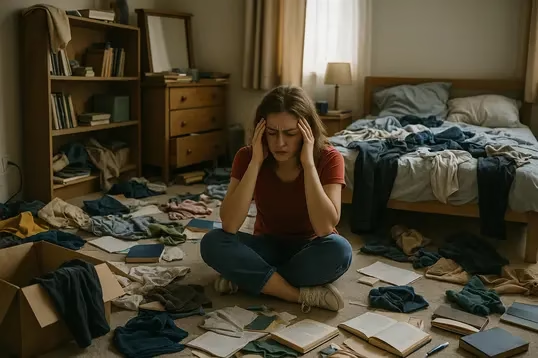
When Clutter Clings to the Corners, it blocks the clarity.
Clutter isn’t just chaos on your shelves. It’s cloud of confusion in your spirit, hovering over your daily life. It’s pile of things, tagged as “May be later”, you never returned to. This clutter is a thing which is neither now your need nor a necessity. In simple words, they are things that you don’t feel excited about.
It’s there troubling your mental clarity, joy and acts as a painful string attached to past. Every day when you look at that wardrobe, shoe rack, fridge or a computer folder with that confusion and a question pops “why do I never find the things I need?”. This all end with an upset mood or a bad day.
Decluttering may act as silver bullet to all these daily life challenges and get you the clarity, calm, and control you didn’t even know you were missing. Decluttering is simply letting go things which are no more a necessity.
And in the letting go, you don’t lose—you lighten. We designed three simple steps of Decluttering and follow up step to make it easy and consistent for you.
Table of content
- Inspired by the Greats: Why Less Works
- Step 1: The “Closet Confession” Ritual
- Step 2: The “Breathe Room” Method
- Step 3: The “Future Self Filter”
- What These 3 Steps Really Do
- The Gentle Follow-Up: Keep the Flow, Not the Pressure
- It Was Never About Stuff
Inspired by the Greats: Why Less Works
Continue reading ⤵
From monks in monasteries to CEOs in black turtlenecks, those who simplify often amplify their impact.
- Steve Jobs wore the same outfit daily—not from boredom, but to reduce decision fatigue.
- Buddhist monks live with a bowl and a robe—and radiate contentment.
- Marie Kondo turned joy into a global language of letting go.
They understood something we’re only just rediscovering:
Simplicity is not lack. It’s luxury.
The luxury of attention. Focus. Freedom.
Let’s now understand the 3-steps for bring back the attention, focus and freedom.
Step 1: The “Closet Confession” Ritual
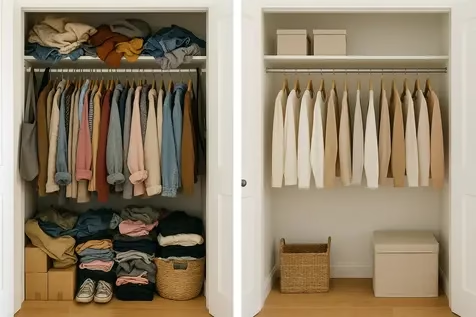
“Who am I still dressing up to be?”
Start in the wardrobe—the temple of transformation. This is where your old selves still live, and your future self is waiting for room to grow.
How It Works:
Stand before your closet, not like a cleaner, but like a truth-teller. Hold each piece and ask:
- Does this feel like me now?
- Would I buy this again today?
- Do I love how I feel in this?
Why It Works:
- Clears mental noise every morning
- Boosts confidence by aligning clothes with your present energy
- Reduces decision fatigue
Step 2: The “Breathe Room” Method

“Create one place that feels like peace.”
Your environment is a mirror. When the outside is chaotic, the inside can’t focus. But you don’t need to overhaul your house—just choose one space to sanctify.
How It Works:
Pick one spot: a shelf, a coffee table, a corner. Strip it bare. Then slowly return only what:
- Brings calm
- Serves a real function
- Sparks something inside you
Light a candle. Open a window. Let it feel like air—light, clean, yours.
Do this every week with a new space.
Why It Works:
- You gain immediate visual relief
- One peaceful space can reset your nervous system
- You create a reset button in your home and your mind
Eventually, your whole space will echo this calm, one corner at a time.
Step 3: The “Future Self Filter“
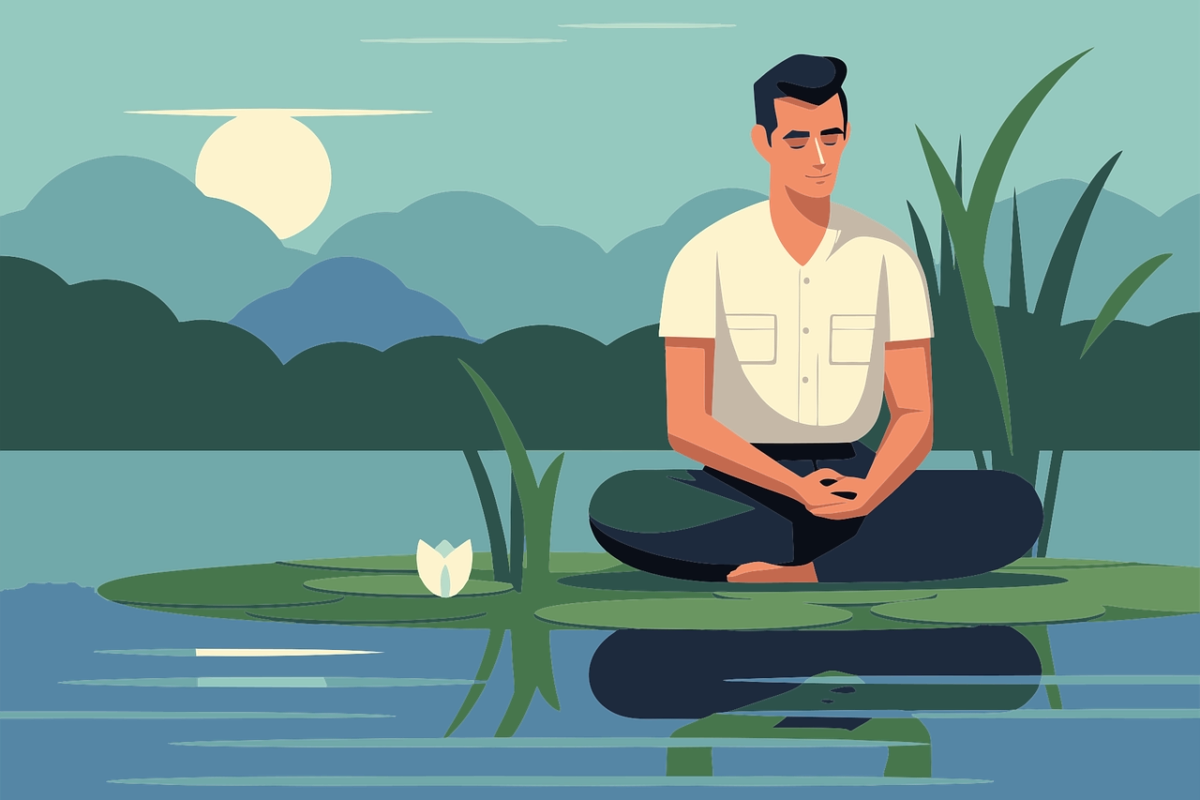
“Would the best version of me keep this?”
Decluttering isn’t just about the past. It’s a love letter to your future. To the version of you that doesn’t settle, delay, or apologize for taking up space intentionally.
How It Works:
Every time you pick up an item—whether a book, a gadget, a gift—you ask:
“Does this belong in the life I’m building?”
If it doesn’t serve your goals, your values, or your vision—it’s time to let go.
This isn’t letting go of things. It’s choosing alignment.
Why It Works:
- Helps declutter emotionally loaded items
- Aligns your physical space with your ambitions
- Builds confidence in your decisions and direction
Let your home become a vision board of who you’re becoming—not a museum of who you were.
What These 3 Steps Really Do
Decluttering isn’t about tidiness.
It’s about truth.
Each item you release is a story you’re done telling. Each space you reclaim is an invitation for new energy. Every drawer you clear becomes a door you open inward.
You don’t need to go minimal—you just need to go mindful.
These 3 steps:
- Help you reconnect with your now
- Create peace in everyday moments
- Inspire future-focused living
They’re gentle. Doable. And they don’t just shift your shelves—they shift your spirit.
📆The Gentle Follow-Up: Keep the Flow, Not the Pressure
You don’t need to declutter your whole house in a weekend. (Please don’t.)
Instead, let your new lifestyle grow like a plant—not a purge. Here’s how:
- Set a “Release Day” once a week: Pick a day to let go of 5 things. That’s it.
- Rotate focus zones monthly: One month for wardrobe, one for workspace, one for digital clutter.
- Repeat the 3 steps often: They’re not a to-do list—they’re a wellness cycle
Let this become your rhythm. You’ll stop cleaning up, and start levelling up.
Final Thought: It Was Never About Stuff
You don’t need to become a minimalist.
You just need to become you, without the noise.
Decluttering is the art of choosing clarity over clutter, peace over piles, meaning over mess.
So when you’re overwhelmed by life, don’t buy something new.
Clear something old.
Let go to grow.
Declutter not just to organize—but to awaken.
Because when your space is free, your soul can finally exhale.
“Sharing is caring! Share this article to spread the word“
Source:
- https://greatergood.berkeley.edu/article/item/six_steps_to_decluttering_your_life
- https://mindfulhealthsolutions.com/declutter-your-home-declutter-your-mind-the-path-to-mental-clarity/
- https://www.livingwithmargins.com/blog/how-to-clear-mental-clutter
- https://tinybuddha.com/blog/10-ways-declutter-mind-clarity-focus-peace-balance/
- https://bemorewithless.com/decluttering-101/
- https://www.becomingminimalist.com/the-freedom-of-less/
Disclaimer:
This article is intended for informational and inspirational purposes only. The tips shared are based on personal experience and general wellness principles. They are not a substitute for professional mental health advice. Always consult a qualified professional if you have concerns about your mental well-being or health.


















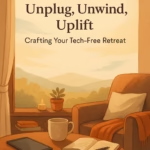
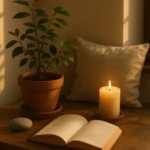








Leave a Reply